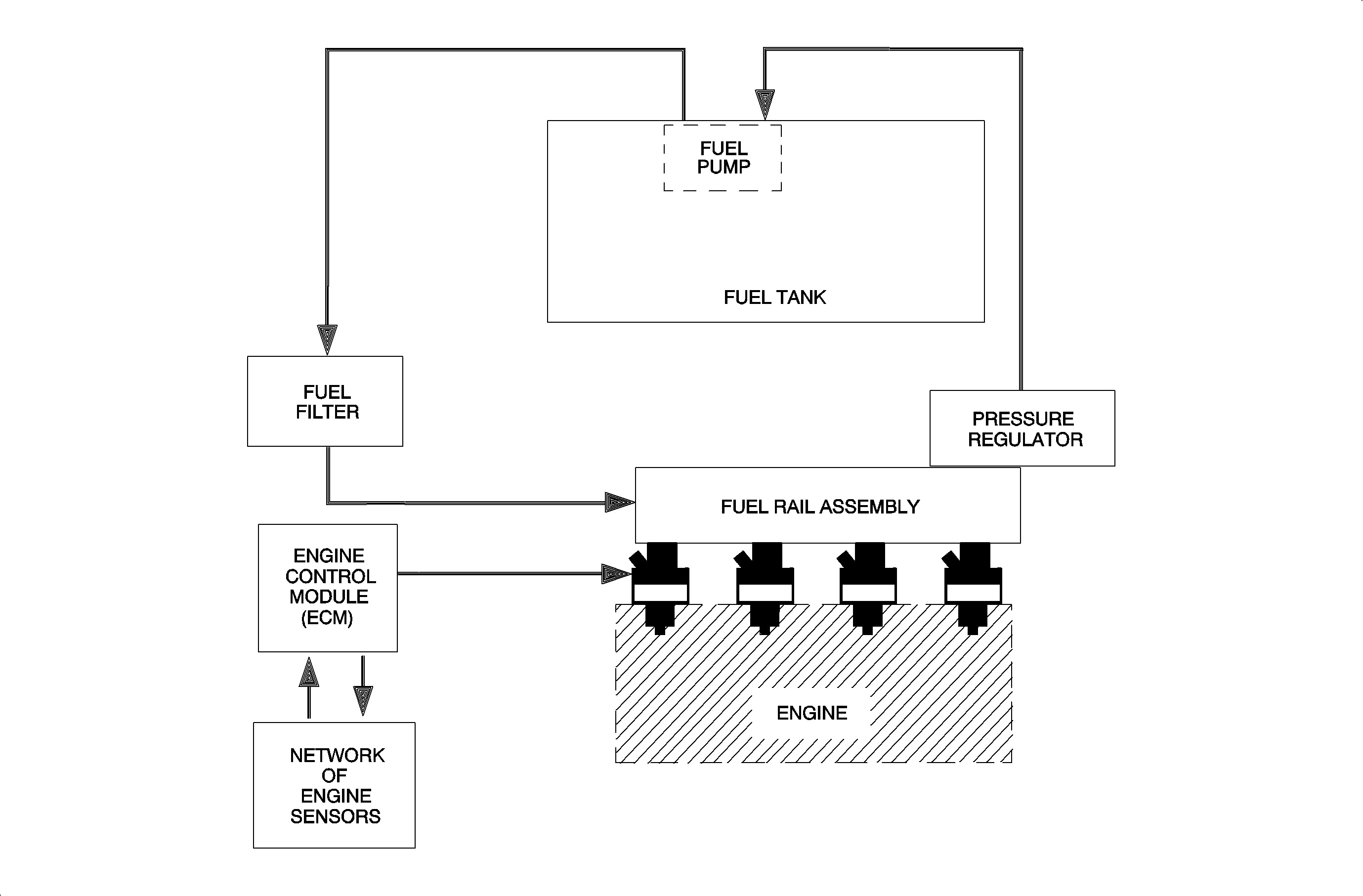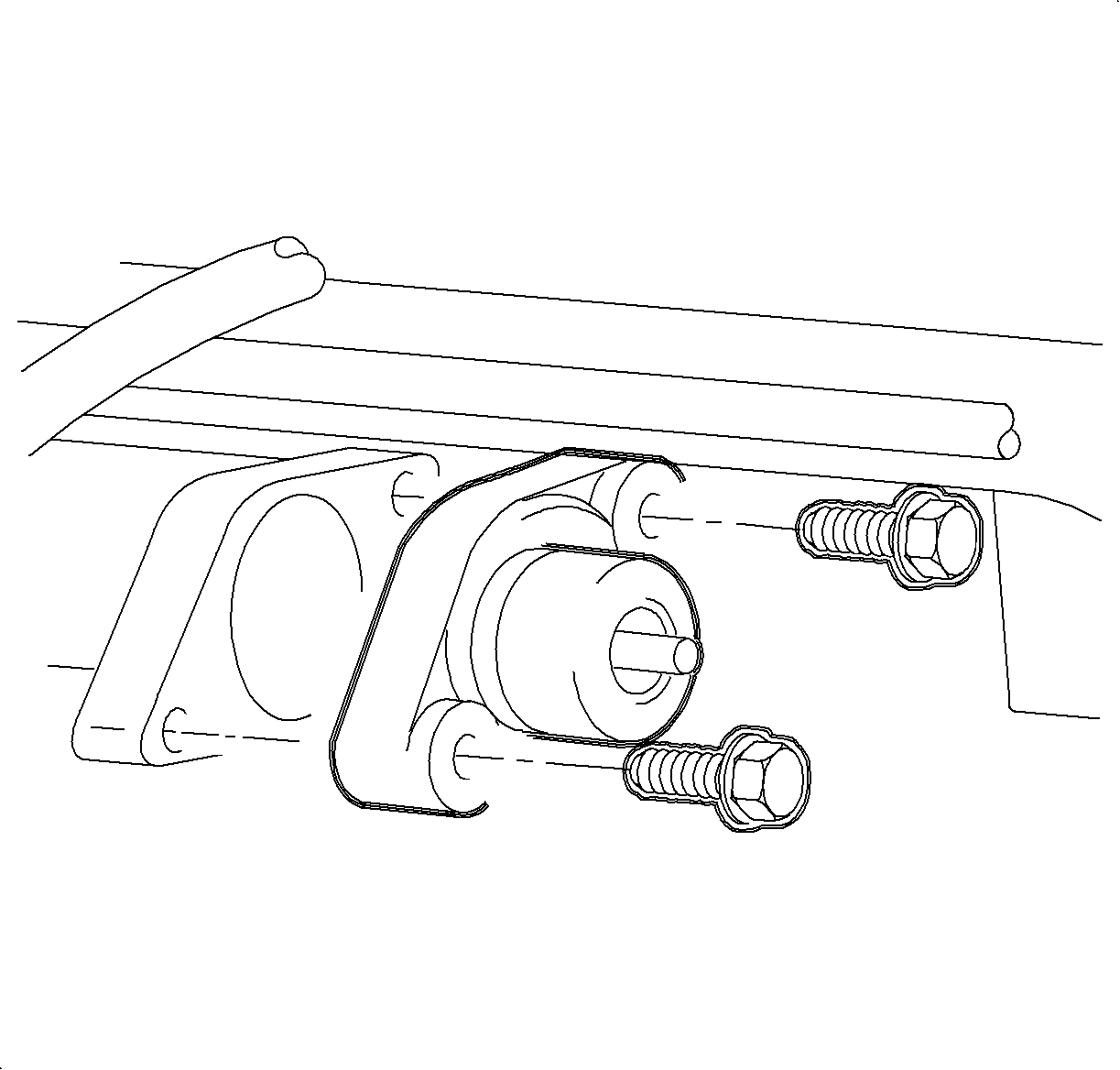Fuel Metering System

The fuel metering system is made up of the following parts:
| • | Fuel supply components (fuel tank, pump, filter, regulator and lines) |
| • | The fuel pump electrical circuit |
| • | The fuel rail assembly, including: |
| • | The throttle body assembly, including: |
| - | The idle air control (IAC) valve |
| - | The throttle position (TP) sensor |
Pressure Regulator Assembly
The pressure regulator assembly is a diaphragm operated relief valve with fuel
pump pressure on one side, and regulator spring pressure and intake manifold vacuum
on the other. The regulator maintains a constant pressure differential across the
fuel injectors at all times by the amount of pressure it takes to lift the diaphragm
off its seat. During idle, a high vacuum signal to the pressure regulator pulls on
the diaphragm, helping to lift it off its seat. This allows for low fuel pressure
during idle. As engine load increases, vacuum drops, allowing the fuel pressure to
increase.

When vacuum drops to zero, spring pressure controls fuel pressure. This spring
is preset at the factory and no adjustment is required. By varying fuel pressure according
to engine vacuum, a constant pressure differential across the fuel injector opening
is maintained. The pressure regulator is mounted at the end of the fuel rail, and
it is serviced as a complete assembly.
With the ignition in the ON position and the engine OFF (zero vacuum), fuel
pressure at the pressure test connection should be 380 kPa (55 psi).
If pressure is lower than the specification, excessive odor and a DTC P0172
could result.
Fuel Pump Electrical Circuit
When the ignition is first turned to the ON position, without the engine running,
the PCM turns the fuel pump relay ON for 2-3 seconds. This builds up
fuel pressure quickly. If the engine is not started within 2 seconds, the PCM
shuts the fuel pump OFF and waits until CKP reference pulses from the EI module are
present. As soon as the engine is cranked, the PCM turns the relay ON which powers
the fuel pump.


